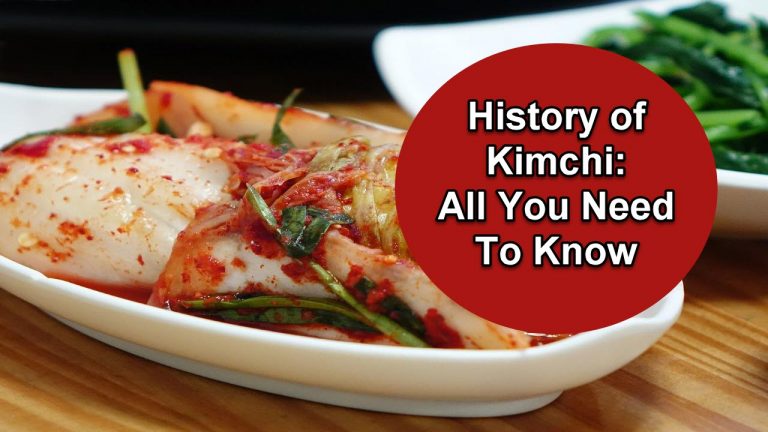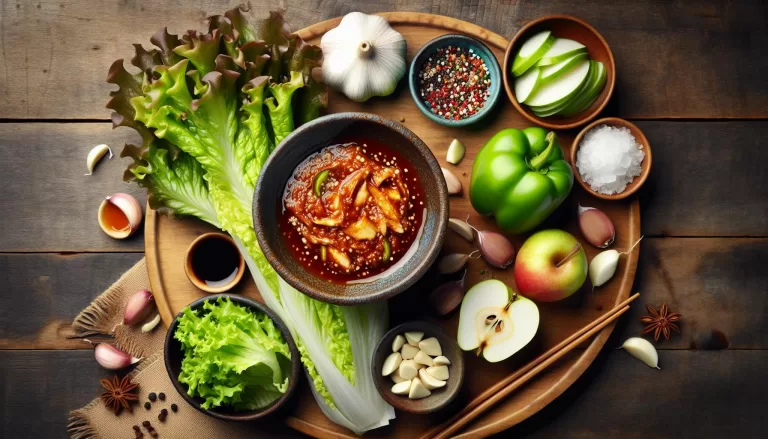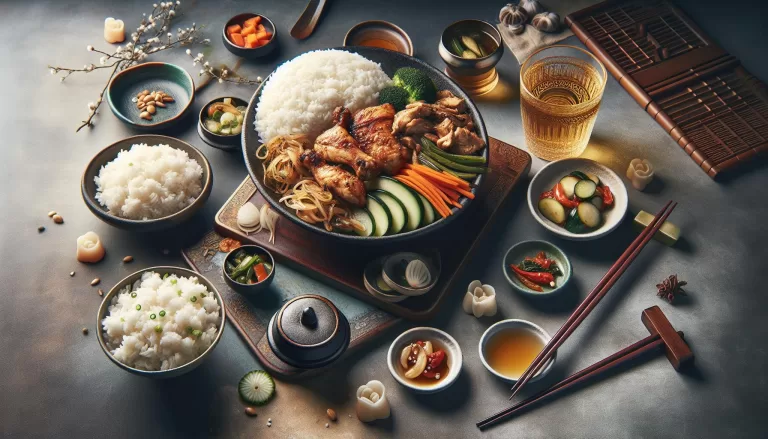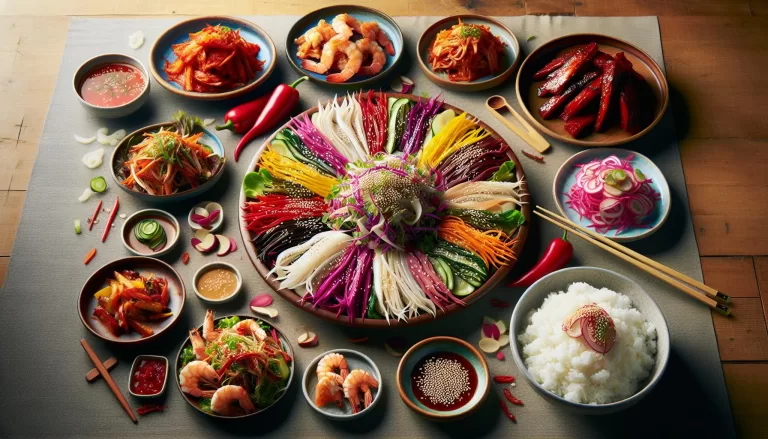Easy Homemade Bulgogi Korean BBQ Beef Recipe with Perfect Side Dishes
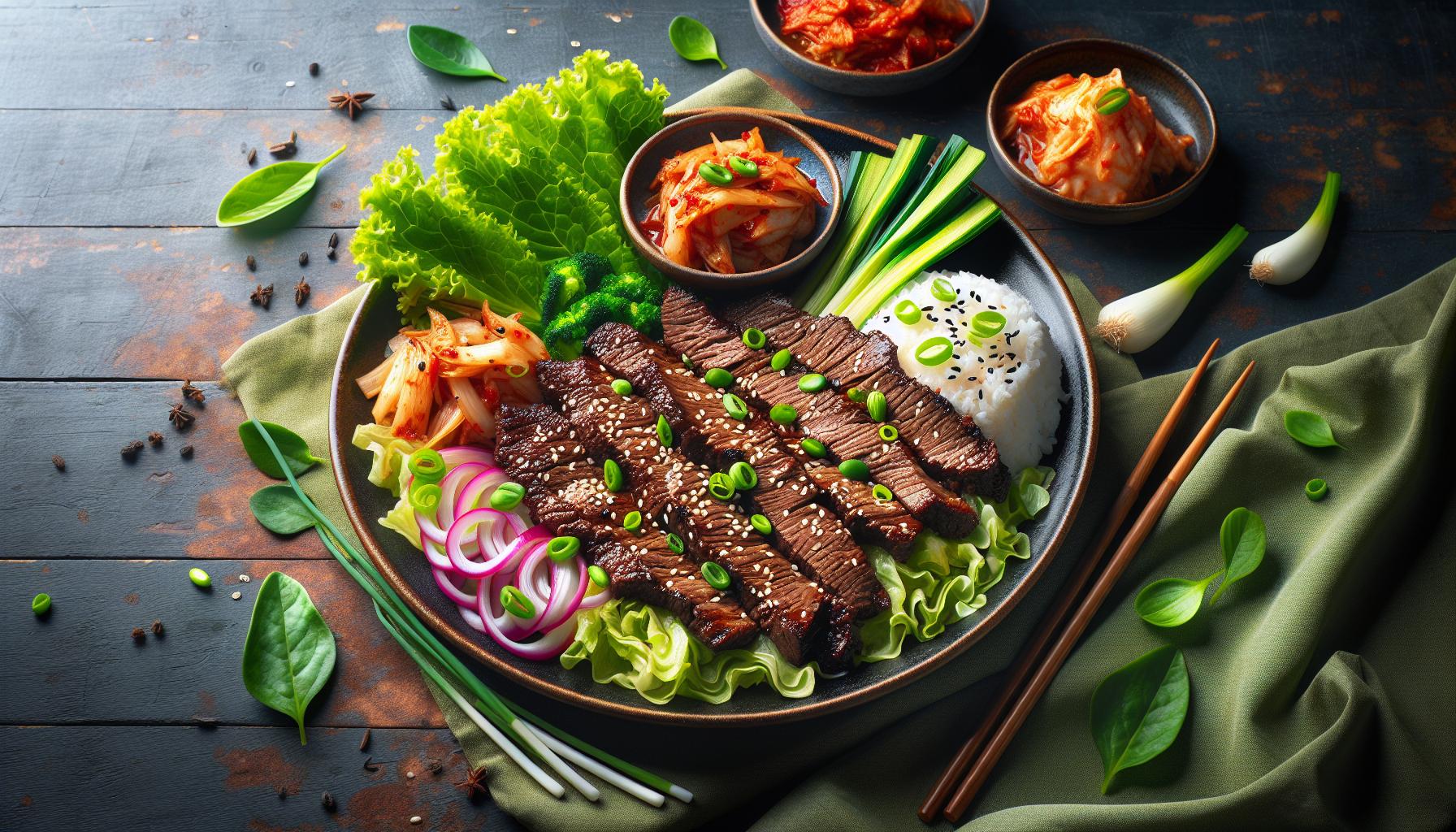
What is Bulgogi?
If you’re a fan of Korean cuisine, you’ve probably come across the flavorful and aromatic dish known as Bulgogi. The name Bulgogi literally translates to “fire meat” from Korean. You might wonder. “What makes it so special?”
Well, here’s your answer. Bulgogi is a classic Korean BBQ beef dish that showcases an exquisite blend of sweet, savory, and smoky flavors. It’s rich in taste and high in nutrition, perfect for a hearty and fulfilling meal.
Being a traditional Korean dish, Bulgogi boasts a culinary history that dates back to the Goguryeo era. Over centuries, the dish has evolved into the modern version we’re familiar with today.
Primarily, it’s prepared with thin, marinated slices of beef. The marinade is a distinctive mix of soy sauce, Asian pear, sugar, sesame oil, garlic, and pepper. The secret to its tender texture is the marination process, which allows the meat to absorb the flavors fully. Ideally, the beef is then grilled, creating its signature smoky flavor.
An eye-catching aspect of Bulgogi is the vibrant array of accompaniments. Typically, the dish comes with a side of fluffy white rice and various fermented Korean vegetables called “banchan.” This combination amplifies the dish’s overall flavor while also providing a balanced nutritional profile.
From a nutritional perspective, Bulgogi is ruled by protein-rich beef and contains healthy fiber from the vegetable accompaniments. It’s a balanced meal that suits both your palette and health.
Now that you’re smitten by Bulgogi, wouldn’t you love to recreate this authentic Korean cuisine in your own kitchen? Good news! Making Bulgogi doesn’t demand any professional cooking skills or specialized equipment. With the proper ingredients and our easy-to-follow steps, the process is simple and fun.
In short, Bulgogi is not just another BBQ dish. It’s Korean culinary history served on a plate, an aromatic blend of tastes, and a nutrition-packed wholesome meal. Exploring and trying out this dish provides a delicious entry point into Korean cuisine – a journey worth undertaking.
Ingredients You’ll Need

Venturing into the savory world of Bulgogi, you’ll find the process requires a handful of key ingredients. You’ve got the basics covered with a high-quality, thinly sliced beef and fluffy white rice. Now, it’s time to focus on creating that unique marinade for your homemade Bulgogi.
First off, you cannot shine without soy sauce. This is the backbone of your Bulgogi marinade and it’s responsible for giving the beef its signature savory flavor.
Up next is Asian pear. This crucial ingredient works wonders, tenderizing your beef while enriching the marinade with a surprising, subtle sweetness. If you can’t get your hands on an authentic Asian pear, a ripe bosc pear or even a juicy apple can make a great substitute.
Another ingredient that contributes to the Bulgogi’s one-of-a-kind flavor is sugar. It combines with the soy sauce and pear blend, creating a delightful sweet-and-salty balance.
Next in line is sesame oil, more than just a flavor enhancer. It’s a carrier, aiding the absorption of flavors into the beef slices which ensures that every bite is bursting with Bulgogi goodness.
For the classic pungency and heat, garlic and pepper are in order. Add these spices to your personal preference, but remember, going overboard might overpower Bulgogi’s subtler flavors.
This might seem like a lot to remember, but trust in the process. If you feel adventurous or want to add a twist, kiwi or pineapple can be included to deliver an extra burst of fruity, tangy sweetness.
About those fermented Korean vegetables, or “banchan”. They provide a punch of flavor and a crunchy, refreshing contrast to the palate. This dynamic set of ingredients presents a nutritional win-win with protein from the beef and fiber from the vegetables.
What’s left is your execution. Embrace the role, become that home chef and create your Bulgogi masterpiece.
| Ingredient | Substitution |
|---|---|
| Asian Pear | Bosc Pear or Apple |
| Soy Sauce | Tamari or Coconut Aminos |
| Korean Vegetables | Pickled Veggies |
Marinating the Beef
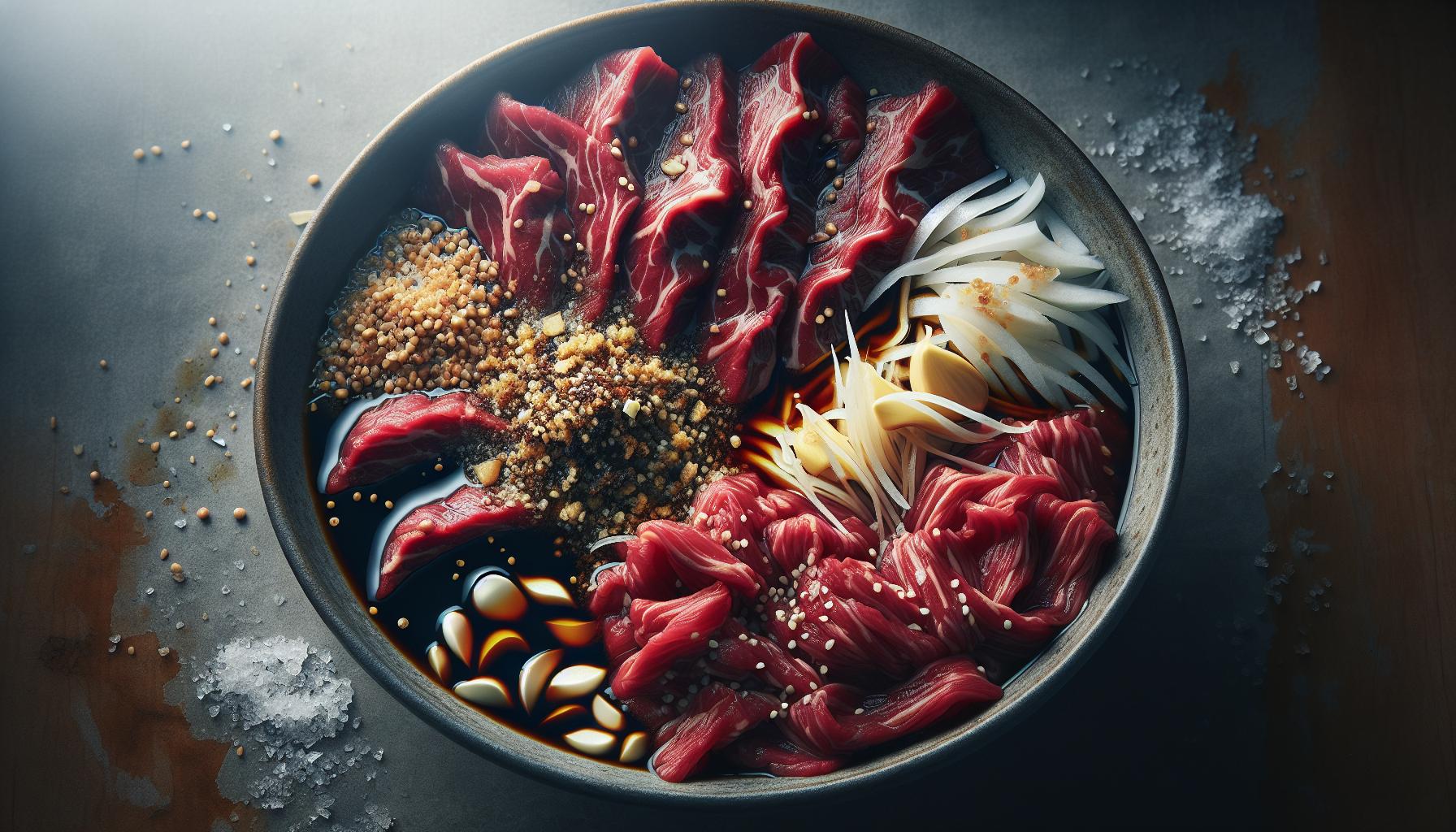
Now that you’ve gathered all the necessary ingredients, it’s time to enter the most crucial stage of making Bulgogi – marinating the beef. This process brings to life the delectable symphony of flavors that makes this dish so remarkable.
Start by making sure your beef is properly sliced. Thin slices are key in Bulgogi for maximum flavor absorption and quick cooking. If the beef isn’t thinly sliced already, you might want to put it in the freezer for about an hour to harden slightly. This makes it easier to cut precisely thin slices.
Next, whisk together all the marinade ingredients in a large bowl. The savory soy sauce, sweet Asian pear, sharp garlic, and toasty sesame oil should harmonize with each other, creating a palette of flavors that will make your beef irresistible. Throw in a dash of pepper and sugar for that extra kick! Don’t shy away from a little experimentation here – a splash of kiwi or pineapple juice can add a fruity twist that sets your Bulgogi apart.
Once your marinade is ready, it’s time to introduce the beef. Make sure every slice gets the VIP treatment it deserves – being fully coated in the marinade. The longer the beef can luxuriate in the marinade, the tastier it’ll be. If you can, give your beef a good overnight rest in the marinade. But if that’s not possible, aim for at least 4 hours to give it enough time to absorb all the fantastic flavors.
While your beef is soaking up all that delicious marinade, you can move on to the banchan. Fermented Korean vegetables will provide the perfect crunchy contrast to your tender, flavorful Bulgogi.
Cooking Bulgogi may seem complicated at first, but by breaking it down into these manageable steps, it becomes an achievable task. Keep in mind that the magic of Bulgogi lies in its marinade, so do not rush this process. Allow the flavors to meld and let the beef soak up the marinade. It is through this patient process that one can truly grasp the essence of Korean cooking.
Cooking the Bulgogi

After you’ve mastered the art of marinating your thinly sliced beef, you’re ready to move into the star of any Bulgogi show – the cooking process. With preparation complete, it’s time to bring heat into the equation. It’s essential not to rush this process.
Your first line of action is preheating your pan to a medium-high temperature. Acast iron skillet or griddle works best for this. You want to ensure the pan gets nice and hot before beef hits the surface. Why? You’re aiming for that mouth-watering, tender Bulgogi with those characteristic slightly charred edges – and a hot pan is key.
Top Tip: Make sure you’re adequately ventilated. Cooking Bulgogi can produce quite a bit of smoke, so you want to ensure your range hood or open windows can handle this.
Lay your marinated beef slices out on the hot pan. You’re not going to want to overcrowd the pan because overcrowding leads to steaming, not grilling. And Bulgogi, like any Korean BBQ dish, is all about the grill. So, respect the pan space!
Try cooking the beef in batches. A half a pound at once should do it. As your beef cooks, turn each piece periodically for uniform cooking and optimal flavor. As tempting as it might be to play around with the slices, resist the urge to flip too often. Give the beef its time to develop those beautifully dark, caramelized edges.
You may find that some beef slices cook faster than others. That’s alright! Simply remove the ones that are done and continue with the process until all are cooked. These variations often add to the overall flavor and presentation of Bulgogi – don’t sweat it!
Once your beef is cooked, you may look to add some extra layers of flavor with some optional stir-ins. Sliced scallions or even sesame seeds are a simple yet effective way of bringing more to the table – and who doesn’t want that?
Remember, patience coupled with the right preparation is key to the perfect Bulgogi. Enjoy the process – it’s part of the rich tapestry of Korean cuisine.
Serving and Enjoying
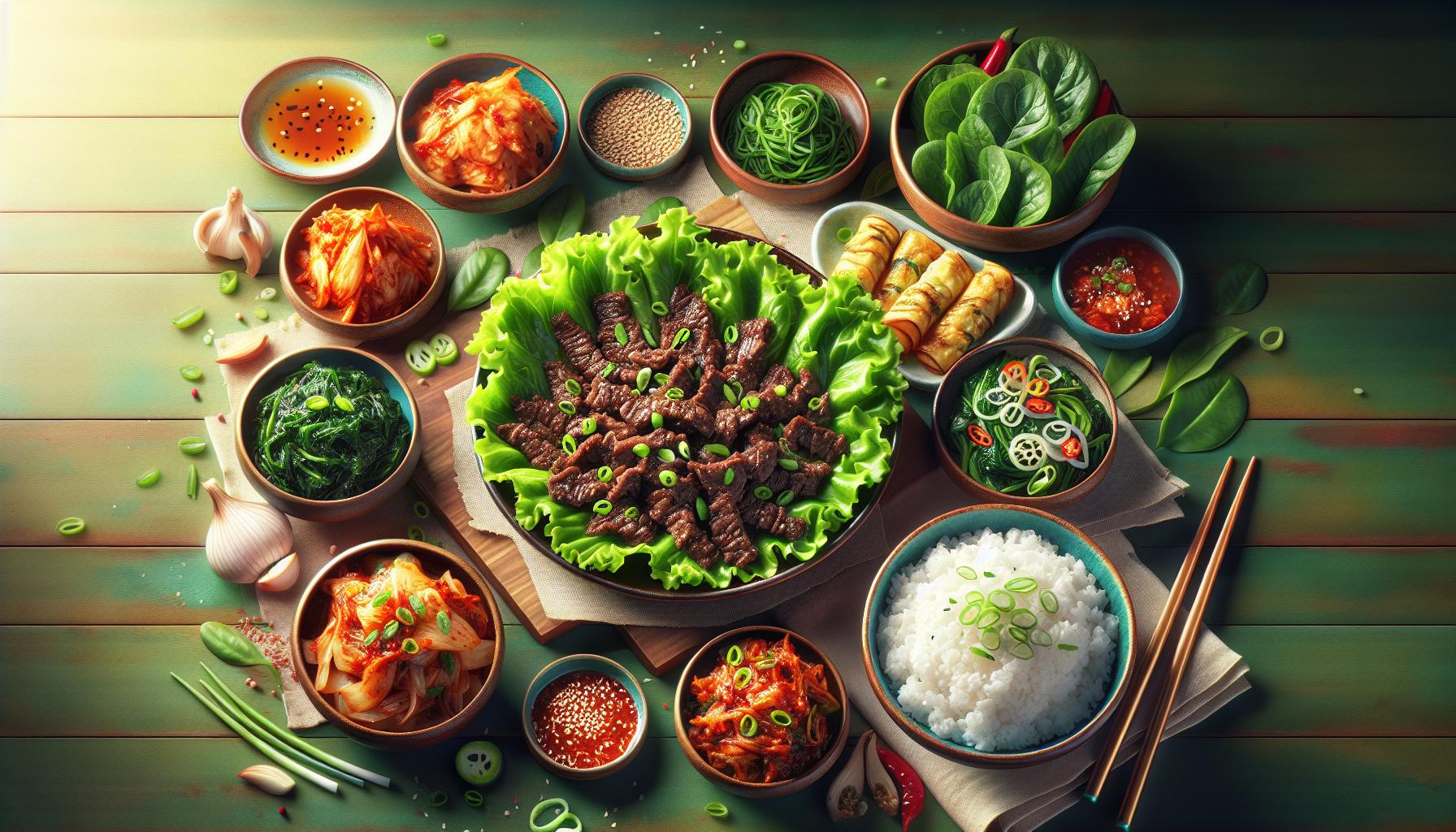
After mastering the act of grilling the perfect Bulgogi, it’s time to move on to the serving and enjoyment of your culinary masterpiece. The way to serve Bulgogi really brings out the essence of Korean dining traditions.
Meal Composition
Korean meals often comprise several dishes served together. Your serving of Bulgogi won’t be an exception. Pair it with a bowl of warm, sticky rice. Don’t fret if you don’t have an Asian grocer near you. Any short grain rice or sushi rice will work just fine. Equally important is the presence of side dishes (banchan) like kimchi, rolled omelette, and seasoned spinach. These offer delightful contrasts to the sweetness of the Bulgogi.
Presentation
Remember, you don’t just eat with your mouth. Your eyes play a part too! Strive to achieve visual harmony on your plate. Lay down a bed of lettuce or perilla leaves and top it off with a heap of Bulgogi. Sprinkle a modest amount of toasted sesame seeds and finely chopped green onions. Isn’t it already looking divine?
Savoring the Flavor
As for how to eat Bulgogi, the choice is yours. Scoop some rice into your mouth followed by a piece of tender, juicy beef. Alternatively, take a piece of lettuce, add a little rice, a generous portion of Bulgogi, and top it with kimchi. Roll it up and take a bite. You’ll experience an explosion of flavors!
Note: Bulgogi is delightfully savory, subtly sweet, and wonderfully aromatic all the same time.
Conclusion
So there you have it! You’re now equipped with the know-how to whip up a delicious homemade Bulgogi Korean BBQ beef. Remember, it’s not just about the taste, but also the presentation and the complete dining experience. Pair your Bulgogi with side dishes like kimchi and rice for a balanced meal. Don’t forget those garnishing touches with lettuce or perilla leaves, sesame seeds, and green onions. Whether you choose to enjoy your Bulgogi with rice or wrapped in lettuce with kimchi, you’re in for a delightfully savory, subtly sweet, and wonderfully aromatic treat. Embrace this rich culinary journey and savor the essence of Korean dining traditions right at your own home. Happy cooking!

